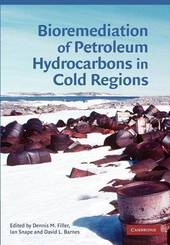
|
Bioremediation of Petroleum Hydrocarbons in Cold Regions
Paperback / softback
Main Details
Description
This guide to bioremediation in cold regions is designed to aid environmental practitioners, industry, and regulators in the remediation of petroleum spills and contaminated sites in cold regions. Remediation design and technology used in temperate climates does not necessarily work in cold climates, and cleanup takes longer due to shorter treatment seasons, sub-freezing temperatures, ground freezing and thawing, and limited bioactivity. Environmental engineers and scientists from eight countries working in the polar regions combine their experiences and expertise with petroleum contamination to write this book. It contains in-depth discussions on regulations, freezing and frozen ground, identification and adaptations of cold-tolerant bacteria, contaminant transport in cold soils and permafrost, temperature effects on biodegradation, analytical methods, treatability studies, and nutritional requirements for bioremediation. Emphasis is given to practical and effective bioremediation methods for application in cold regions. Emerging technologies are also discussed.
ReviewsReview of the hardback: '... an excellent tool for environmental engineers working in cold regions, but also it will truly satisfy an extensive number of readers (scientists, students, engineers, planners etc.).' The Geographical Journal
|